Simple Guide: Safe And Easy Tips To Fly With Your Baby
When traveling, it can be difficult to focus on your trip and you still have some time to choose a suitable restaurant. Before you go, do enough research so that you have at least one option in the different areas that you will visit.
How old can a baby fly?
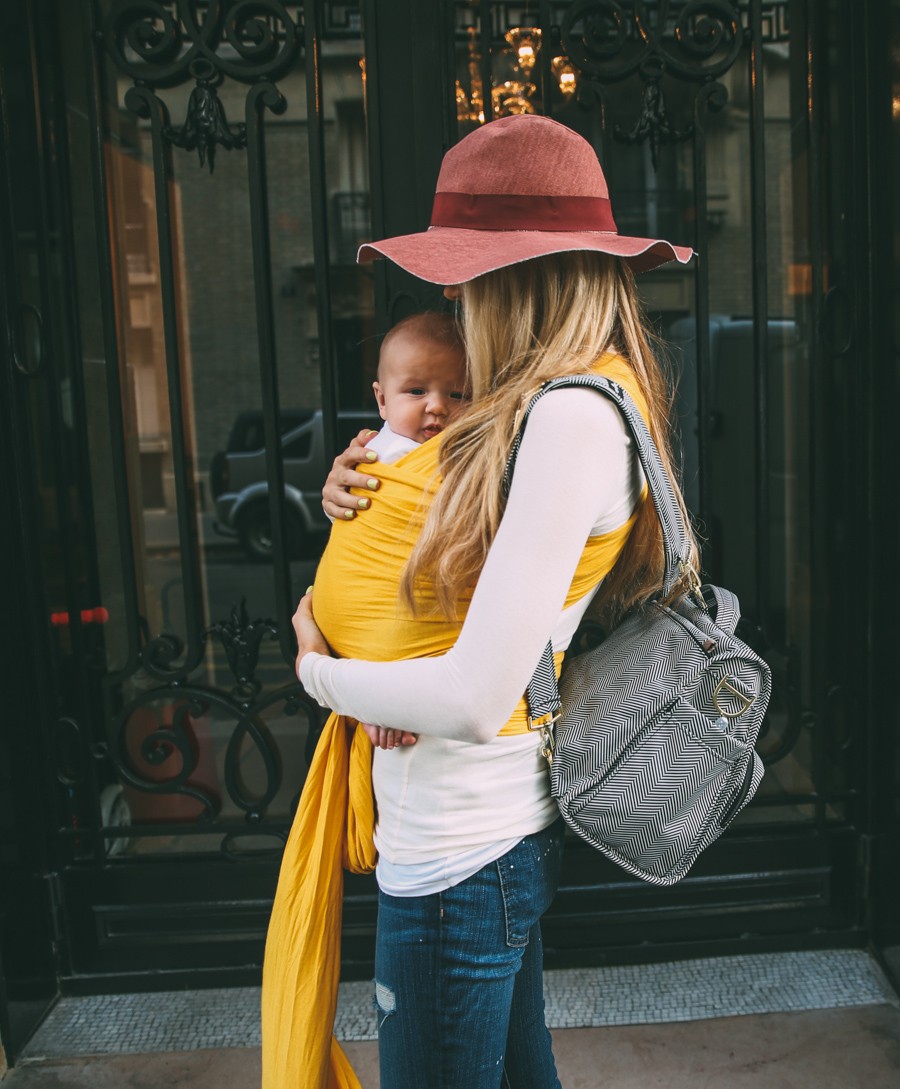 |
| Photo: Amber Fillerup Clark |
Most pediatricians believe that a 4-6 week old baby can handle airplane flights, says Elizabeth Berger M.D. But this only refers to healthy babies who get the go-ahead from the doctor. Premature infants, as well as those with respiratory or other health issues, may fare better on the ground.
It’s also smart to check your airline’s policies on newborn travel. They might have a minimum age requirement, ranging from 2 days old to 2 weeks old. In some cases, newborns won’t be granted permission without a doctor’s note. You might also need proof of your baby’s age. (If official government paperwork hasn’t arrived, you could possibly use vaccination or hospital forms.) International travel isn’t possible until your baby receives an official passport.
If you're feeling queasy about the idea of spending a whole lot of money on an airline ticket for a baby, ask your airline for a discounted fare. Many airlines offer discounts of up to 50 percent for children under age 2.
What do children need to fly?
Got the green light from the pediatrician to board with your baby or jetting off with your toddler? Before you start thinking about what to pack in her pint-size suitcase, you’ll need to gather some key documents and items.
A ticket, in some cases. Most airlines don’t require you to buy a ticket for babies younger than 2 years old for domestic flights, but she’ll have to sit on your lap, and taxes and fees may still apply. If you do purchase a ticket for a separate seat, she’ll need to sit in her car seat (more on that later). Flying internationally? Your under-2-year-old may need her own ticket depending on the airline. In either case, if you don’t need a ticket for your baby, you still need to notify the airline that you’re bringing her on the plane. As for kids 2 and up? They always need a ticket.
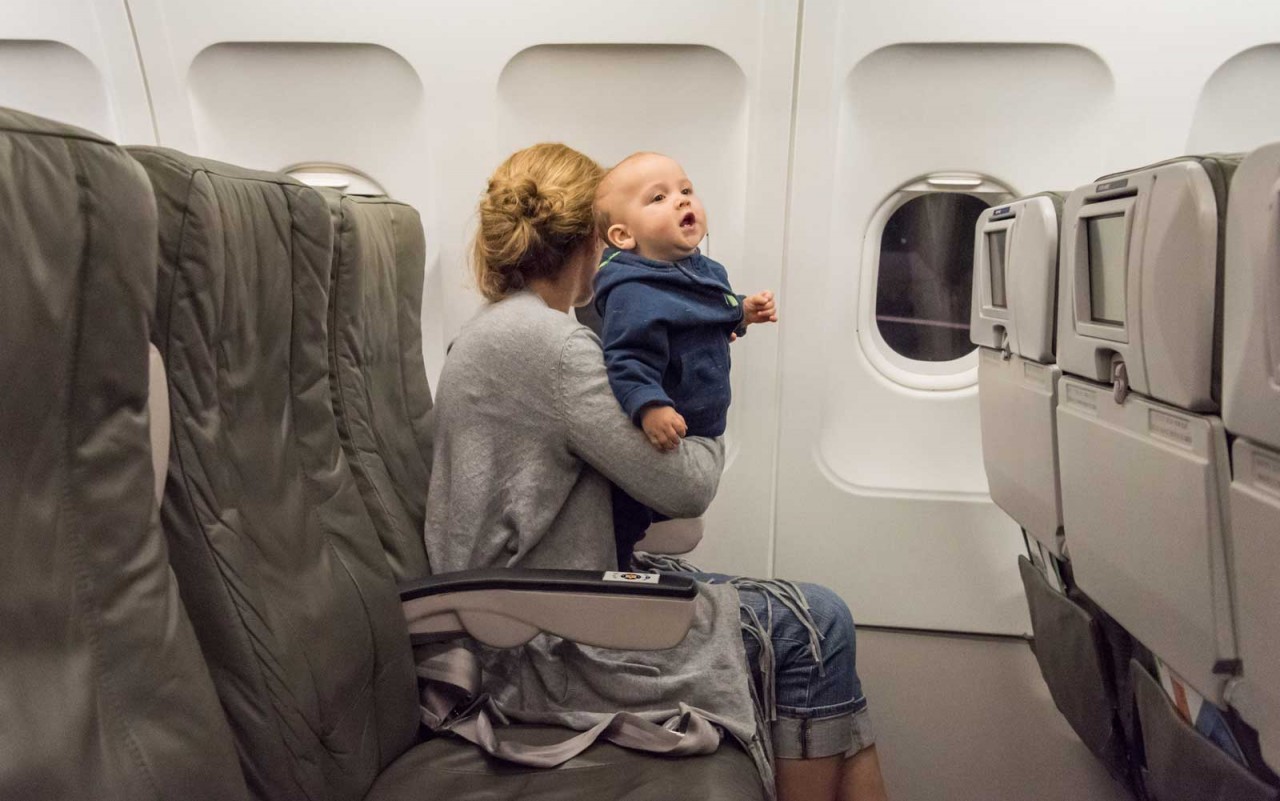 |
| Photo: Travel + Leisure |
A passport for international flights. All U.S. citizens, including newborns, need their own passports to fly internationally. To obtain one for your baby, you’ll need to use the DS-11 form and apply together in person, so plan ahead. For domestic flights, babies and children under 18 don’t need a passport or an ID.
Her birth certificate. Some airlines require proof of age documentation for babies and children under 18. Call ahead to find out if you need it, or to be safe, just bring it along.
A letter of consent to travel. For international travel, unless a baby or child is traveling with both parents, U.S. Customs and Border Protection strongly recommends having a notarized letter granting parental permission. If the child is traveling with one parent, the other parent should authorize the note. If the child is traveling without either parent, both parents should authorize the note.
A face mask, for toddlers 2 and up. To protect against COVID-19, commercial air passengers over age 2 must wear a face mask throughout the duration of their travel experience, says the Transportation Security Administration (TSA).
1. Get to the Airport Early When Flying With a Baby
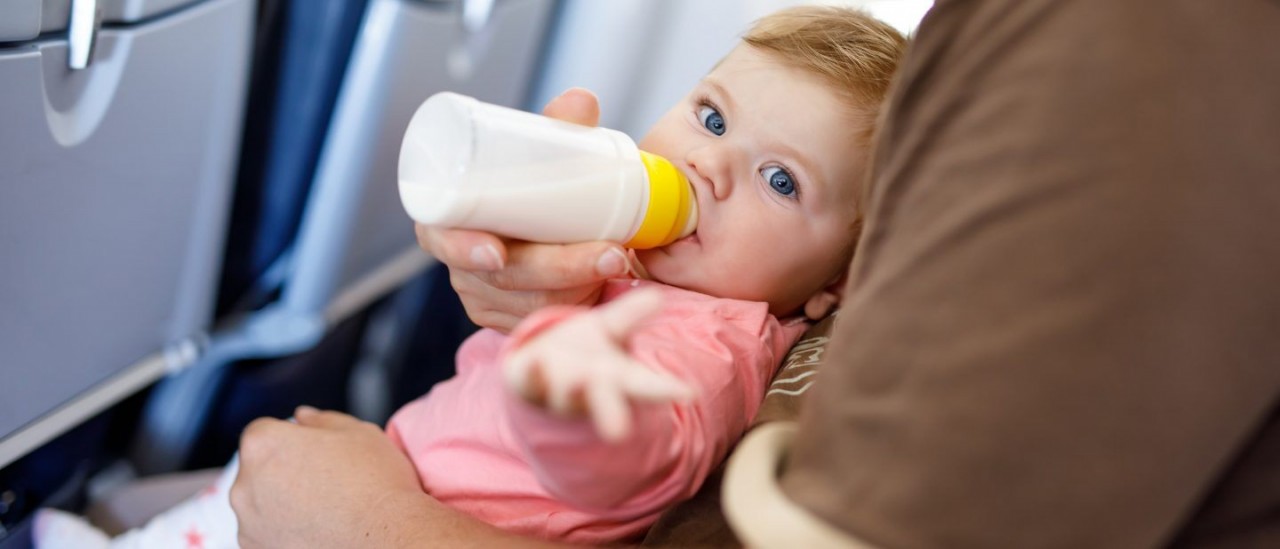 |
| Photo: Shutterstock |
While some new parents argue against arriving at the airport too early, as it requires entertaining your baby for a longer stretch of time outside the comforts of home. The simple fact remains: airport stress is dictated by your departure time. And the less time you give yourself to go from the parking garage to the gate, especially with a baby and extra gear in tow. The more stress you will create. Flying with a baby takes significantly more time than traveling on your own. Arriving 90 minutes to two hours before your flight ensures no matter how long the check-in or TSA lines are, or how slowly they’re moving, you’ll never have to sweat missing your flight. Even better, it gives parents a chance to regroup, order lunch, feed the baby, and buy a book they won’t be able to read when they get inside the terminal.
2. Request a seat as far forward as possible
The back of the plane is noisier, vibrates more, and is less convenient for deplaning than the front.
Brush-up on how to install the safety seat if you’re taking one before you fly. Safety experts recommend buying a separate seat and bringing a car seat, even when they’re young enough to ride on your lap.
If your child is particularly active, a bulkhead row eliminates the possibility that her Mr. Worm toy will land in the glass of anybody sitting in front of you. But we don't like bulkhead rows, because you can't have most of your carry-ons near you during takeoff and landing when you tend to need them most. We don't like the bassinets that bolt to the bulkheads, either, because they're so flimsy that you'll worry constantly about sudden turbulence.
3. Gate-Check Your Stroller and Car Seat
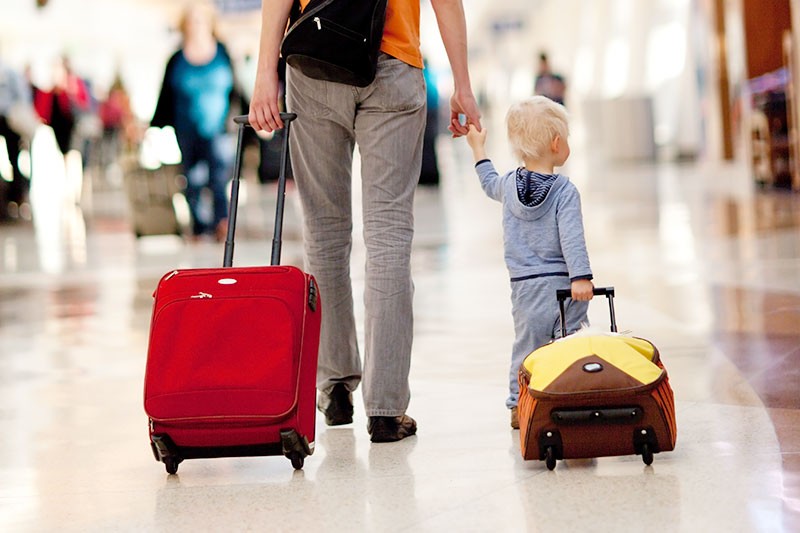 |
| Photo: Mother Mag |
The beauty of flying with small children is that car seats and strollers fly free. Better still, you can walk them straight down the jetway and check them in before you board the plane, ensuring both will be there when you disembark. For a stroller, this is a no-brainer. Why carry a baby through the airport when you can push them? Even if you’re wearing a baby carrier, it’s nice to have at least an umbrella stroller should your flight be delayed or your baby gets fussy.
Whether to gate-check a car seat that’s not coming on the plane is a bigger debate. But the arguments are straightforward: Car seats are not cheap and those checked at the terminal often get the crap kicked out of them as they move through the bowels of the airport/airplane. There’s also a chance, albeit a small one, that the car seat doesn’t make the flight, and you’re left at your destination with no way to drive the baby to grandma’s house. Gate-checking the car seat may mean lugging it through the airport, which admittedly sucks, but ensures it will make it to your final destination and is less likely to be damaged along the way. No matter what you decide, buy a travel bag and preferably one with backpack shoulder straps to protect your investment and make carrying it easier. Also, consider buying a lighter travel car seat. Many weigh under 10 pounds and cost less than $75.
4. Handle baggage better
You become most aware of how much baggage a traveling infant requires when you arrive at the airport and unload everything on the curb. If you're lucky, a check-in or a skycap will be right there. As much as you may have disdained these in your pre-baby days, be grateful for them now and tip accordingly ($1 per bag is standard). If neither is available, then your stroller becomes invaluable. Throughout your trip, you'll use it only occasionally for an infant and more often as a private baggage cart. Every airline we've flown will let you check it at the gate. Get a tag for it from the gate staff, and drop it off just before you step through the door of the plane, where it will be returned to you at your destination, hopefully in time for you to make your next connection.
5. Watch your baby's back
Because families with small children are often not allowed to preboard, infants are now in the thick of the boarding fray—and more at risk for the injuries associated with it. There's the danger that somebody will drop a carry-on on them while trying to move it into or out of an overhead bin or smack them with a wayward bag when boarding or getting off the plane.
One way to minimize the risk is to have one adult board as early as possible, carrying the safety seat and anything that will allow you to stake a claim for the bin directly over your seat. Then, after everyone else has boarded, the other adult and the infant can make a late entrance. This also minimizes the time that your baby has to be aboard.
6. Pack extra supplies
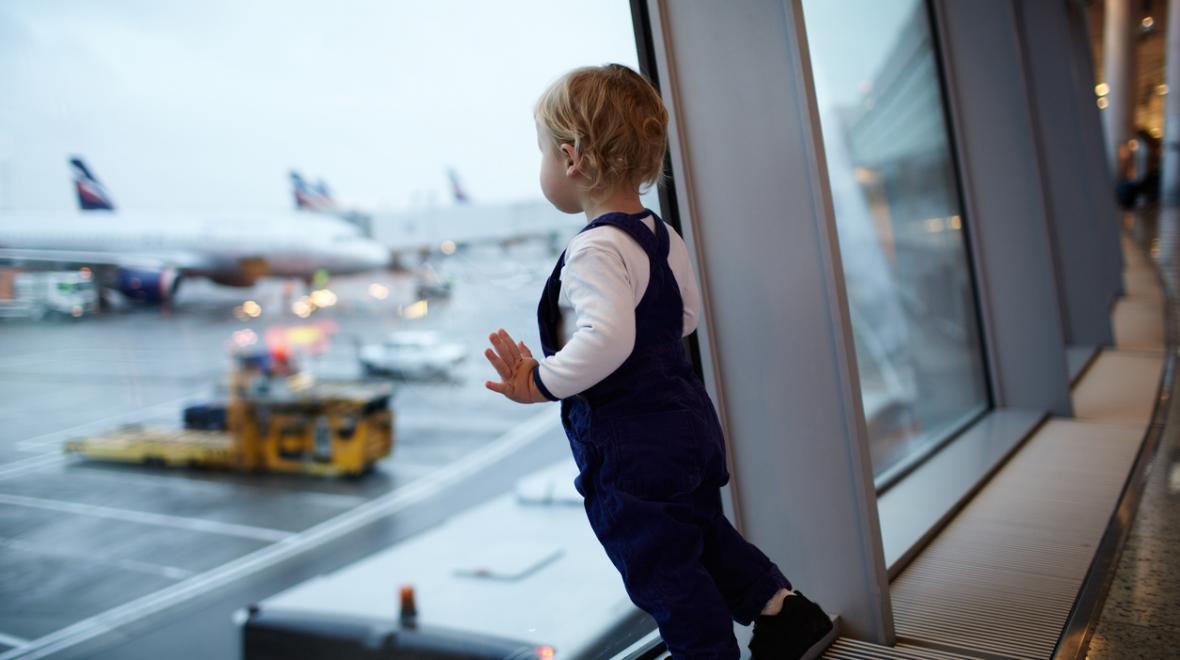 |
| Photo: iStock |
One of our most unpleasant experiences traveling with Cleo was on a flight from New York to Seattle that was supposed to last five hours but ended up taking two days. We sat on the runway at LaGuardia for three hours before taking off, made an unscheduled stop in Nashville because we were low on fuel, and spent an unplanned night in Dallas, where the airline refused to release our bags. At midnight, we had to hire a taxi to help us scour convenience stores for baby food and supplies. Needless to say, we now carry a two-day's supply of everything.
7. Protect her ears
During descent and takeoff, we usually keep Cleo sucking on something to relieve ear pressure—a bottle, a pacifier, or her favorite: the plastic seat-back safety card. We give her decongestants only if she's had a cold. So far, her ears have bothered her only once, when we made a quick descent for our unscheduled landing in Nashville. And even then, she complained less than many adults on that flight.
8. Nurse or Feed Them During Take-off and Landing
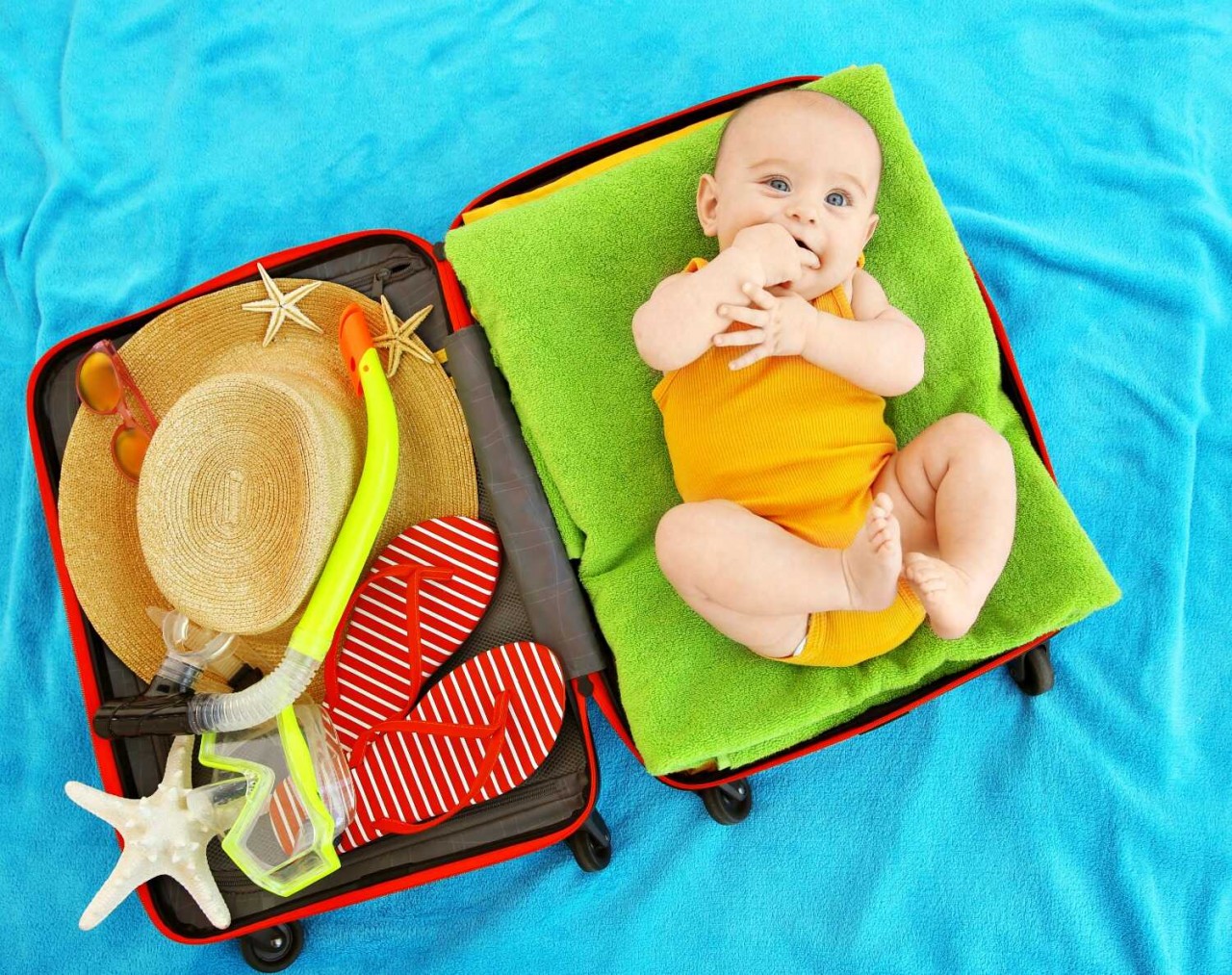 |
| Photo: Deposit Photos |
Hands down the number one tip for flying with a baby and one aimed at keeping the entire plane from hating you is to nurse or feed your baby during take-off and landing. Their ears are especially sensitive to the changes in air pressure during those phases of the flight and the result of the uncomfortable sensation is usually an armageddon-like meltdown. By nursing or giving them a bottle, the swallowing keeps the ears from popping and the cabin quiet(er). Or, if they don’t want to eat, give them a pacifier.
9. Stay Calm
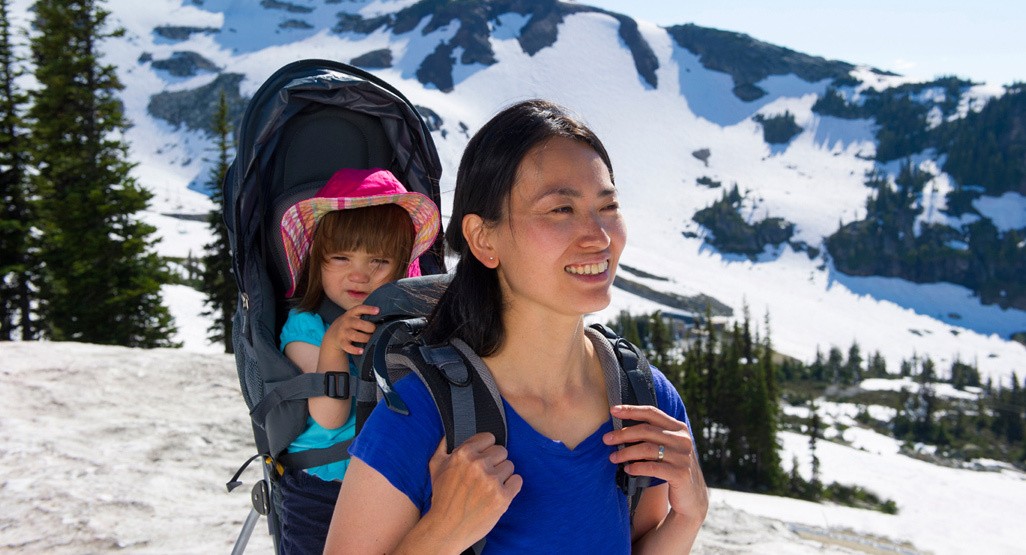 |
| Photo: iStock |
Finally, keep a cool head about you. A nervous parent breeds a nervous baby, and the calmer you stay, the more likely the child will mirror your emotions. Traveling with a baby can be stressful, but a lot of that stress is due to worrying about the (dis)comfort of other passengers. Babies cry on planes, that’s what babies do. And assuming you don’t throw on your Beats the minute your child starts melting down, people will understand that you’re trying to stop the crying, especially if they have kids of their own. And if they don’t, screw them and their judgy glances. Your baby’s got places to go too.
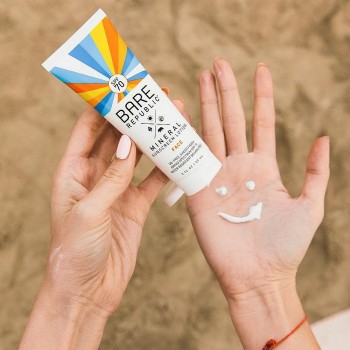 | Useful Tips For A Healthy Summer Skin Care Protecting your skin in the summer is essential, especially when the sun can seriously harm your health. Here are some simple and useful tips that ... |
 | 3 Easy Ways to Decluttering After the Holidays Like A Pro Are you ready to get busy, declutter your home with for a fresh start after the holiday? |
 | Top 10 Things You Do Wrong When Cold Calling and How to Fix Them According to professional marketer Charlie Cook, about 2% of cold calls result in a sale, and there is always something you can do better to ... |
Recommended
 Handbook
Handbook
Vietnam Moves Up 8 Places In World Happiness Index
 Handbook
Handbook
Travelling Vietnam Through French Artist's Children Book
 Multimedia
Multimedia
Vietnamese Turmeric Fish among Best Asian Dishes: TasteAtlas
 Handbook
Handbook
From Lost to Found: German Tourist Thanks Vietnamese Police for Returning His Bag
 Handbook
Handbook
Prediction and Resolution for the Disasters of Humanity
 Handbook
Handbook
16 French Films To Be Shown For Free During Tet Holiday In Vietnam
 Handbook
Handbook
Unique Cultural and Religious Activities to Welcome Year of the Snake
 Handbook
Handbook


